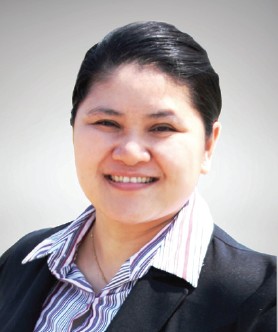Predicting Factors of Physical Activity among University Students, Thailand
Main Article Content
Abstract
MATERIAL AND METHODS: Four hundred undergraduate students at Burapha University, Bangsaen campus, were invited to participate in this study. Data were collected by using questionnaires and multiple linear regressions statistic was used for analyzing the predicting factors of physical activity.
RESULT: The research findings revealed that 41 percent of the research participants had a high level of physical activity. Their perceived self-efficacy (ß = 0.43, p < 0.01), interpersonal influences (ß = 0.19, p < 0.01) and perceived benefit (ß = 0.14, p < 0.01) were the significant predictors of physical activity, accounted for 37.9 % of the variance.
CONCLUSION: Encouraging young adults to take care of their own health and motivating them to engage in physical activity organized by university health promotion agencies would finally result in their health benefits. Strategies targeted at physical activity, perceived self–efficacy, interpersonal influences and perceived benefit of physical activity should be developed for promoting behaviors of physical activity and exercise.
Article Details
This is an open access article distributed under the terms of the Creative Commons Attribution Licence, which permits unrestricted use, distribution, and reproduction in any medium, provided the original work is properly cited.
References
World Health Organization. A European framework to promote physical activity for health. World Health Organization Regional Office. Copenhagen, 2007.
Ross DJ. Physical activity instruction of older adults. Illinois: Human Kinetics, 2019.
Tucker JM, Welk GJ, Beyler NK. Physical activity in U.S. adults: compliance with the physical activity guidelines for Americans. Am J Prev Med 2011;40(4):454-61.
Valle CG, Tate DF, Mayer DK, et al. Physical activity in young adults: a signal detection analysis of Health Information National Trends Survey (HINTS) 2007 data. J Health Commun 2015; 20(2):134-46.
Australian Institute of Health and Welfare. Impact of physical inactivity as a risk factor for chronic conditions: Australian burden of disease study series no. 15 Cat. no. BOD 16. Canberra: AIHW, 2017.
World Health Organization. Non-communicable diseases progress monitor, 2017. Geneva: World Health Organization, 2017.
The World Bank .Cause of death, by non-communicable diseases (% of total), 2019. (Accessed July 25, 2019, at https://data.worldbank.org/indicator/SH.DTH.NCOM.ZS? end=2016&start=2000&view=chart)
World Health Organization. Noncommunicable diseases, 2018. (Accessed August 9, 2019, at https://www.who.int/ news-room/fact-sheets/detail/noncommunicable-diseases).
World Health Organization. Noncommunicable diseases (NCD) country profiles, 2018. (Accessed August 9, 2019, at https://www.who.int/nmh/countries/tha_en.pdf).
U.S. Department of Health and Human Services. Physical activity guidelines for Americans, 2nd edition. Washington, DC: U.S. Department of Health and Human Services, 2018.
Kushi LH, Doyle C, McCullough M, et al. American cancer society guidelines on nutrition and physical activity for cancer prevention: reducing the risk of cancer with healthy food choices and physical activity. CA Cancer J Clin 2012; 62(1): 30-67.
Kwan MY, Cairney J, Faulkner GE, et al. Physical activity and other health-risk behaviors during the transition into early adulthood: a longitudinal cohort study. Am J Prev Med 2012;42(1):14 -20.
National Statistic Office. Report of the 2007 exercise behavior survey. Bangkok: Thana Place; 2008.
National Statistic Office. Survey on population behavior in playing sport or physical exercise and mental health 2011. Bangkok; Satitipayakorn, 2012.
National Statistic Office. Report of the 2015 exercise behavior survey. Bangkok; Satitipayakorn, 2016.
Liangruenrom N, Topothai T, Topothai C, et al. Do Thai people meet recommended physical activity level?:The 2015 National Health and Welfare Survey. J Health Sys Res 2017;11(2): 205-20.
Topothai T, Liangruenrom N, Topothai C, et al. How much of energy expenditure from physical activity and sedentary behavior of Thai adults: the 2015 National Health and Welfare Survey. J Health Sys Res 2017; 11(3):327-44.
Lee IM, Paffenbarger RS. Associations of light, moderate, and vigorous intensity physical activity with longevity: the Harvard Alumni Health Study. Am J Epidemiol 2000; 151(3):293–9.
Ruiz JR, Rizzo NS, Hurtig-Wennlof A, et al. Relations of total physical activity and intensity to fitness and fatness in children: the European Youth Heart study. Am J Clin Nutr 2006; 84(2):299-303.
U.S. Department of Health and Human Services. 2008 physical activity guidelines for Americans, 2008. (Accessed August 9, 2019, at https://health.gov/paguidelines/2008/pdf/ paguide.pdf)
Pender NJ, Murdaugh CL, Parsons MA. Health promotion in nursing practice. 6th ed. Massachusetts: Pearson, 2010.
Varma VR, Dey D, Leroux A, et al. Re-evaluating the effect of age on physical activity over the lifespan. Prev Med 2017; 101:102–8.
Zakarian JM, Hovell MF, Hofstetter CR, et al. Correlates of vigorous exercise in a predominantly low SES and minority high school population. Prev Med 1994; 23(3):314-21.
Gontarev S, Kalac R, Ameti V, et al. Factors associated with physical activity among Macedonian adolescents in Albanian ethnic community. Iran J Public Health 2016; 45(4):474-84.
Kubayi NA, Surujlal J. Perceived benefits of and barriers to exercise participation among secondary school students. Mediterranean J Soc Scien 2014; 5(20):121-6.
Bandura A. Guide for constructing self-efficacy scales. In: Pajares F, Urdan T,eds. Self-efficacy beliefs of adolescents. Connecticut: Information Age Publishing, 2006: 307-37.
Bandura A. Self-efficacy: the exercise of control. New York: W.H. Freeman and Company, 1997.
Lovell GP, Ansari WE, Parker JK. Perceived exercise benefits and barriers of non-exercising female university students in the United Kingdom. Int J Environ Res Public Health 2010; 7: 784-98.
Wu TY, Pender N. Determinants of physical activity among Taiwanese adolescents: an application of the Health Promotion Model. Res Nurs Health 2002; 25(1):25-36.
Wu SY, Pender N, Noureddine S. Gender differences in the psychosocial and cognitive correlates of physical activity among Taiwanese adolescents: a structural equation modeling approach. Int J Behav Med 2003; 10(2):93–105.
Duncan SC, Duncan TE, Strycker LA. Sources and types of social support in youth physical activity. Health Psychol 2005; 24(1):3-10.
Wilk P, Clark AF, Maltby A, et al. Examining individual, interpersonal, and environmental influences on children’s physical activity levels. SSM Popul Health 2018; 4:76–85.


